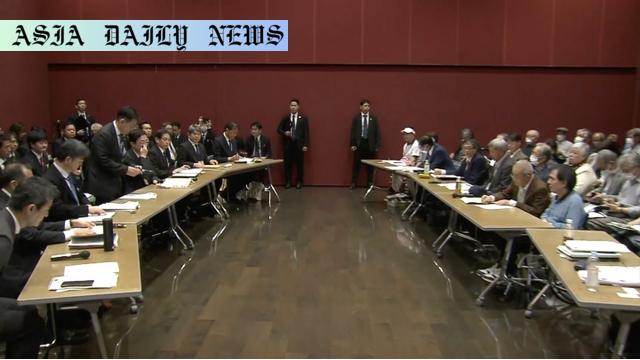Minamata disease sufferers met with Environment Minister Asao Keiichiro to discuss their challenges and advocate for recognition reform.
The minister engaged in discussions with Minamata disease sufferers over two days.
Participants advocated for patient recognition reforms.
Last year’s grievances about microphone cutoff were addressed.

Background of Minamata Disease and Its Impact
Minamata disease, first identified in the 1950s in Minamata City, Kumamoto Prefecture, is a devastating neurological illness caused by mercury poisoning. The disease arose as a result of industrial waste being discharged into Minamata Bay, affecting both the marine ecosystem and the people who relied on it as a primary source of food. Symptoms include numbness in the extremities, difficulty walking, muscle weakness, and other severe neurological conditions, leaving countless individuals and families afflicted over several generations. Despite decades of awareness and legal battles, the recognition and compensation for victims remain contentious issues in Japan. The disease serves as a dire reminder of environmental negligence and underscores the need for stringent regulations to prevent similar scenarios in the future.
Environment Minister Asao’s Mission to Mend Relations
Japanese Environment Minister Asao Keiichiro traveled to Minamata City for two days of discussions with groups of sufferers, marking a significant moment in the efforts to heal strained relations between the government and the afflicted community. The engagement comes ahead of the annual memorial service scheduled for May 1, a day set aside to honor the victims. The move was partly driven by the controversy from the previous year, where ministry staff abruptly muted the microphones of sufferers delivering heartfelt accounts, citing time constraints. Prompted by criticism, this year’s proceedings allowed extended time for victims and their families to share their demands and experiences. Minister Asao began his visit by inspecting patient accommodations and initiating a series of discussions with six groups. He offered an apology for last year’s incident, setting a contrite and empathetic tone for the dialogues that followed.
Voices of Suffering and Pleas for Justice
During the discussions, sufferers shared harrowing stories of their daily struggles and sought reforms in the patient recognition system. Otosako Satoshi, a participant, recounted how his mobility challenges, chronic pain, and deteriorating health have impacted his life. Despite his dire condition, Otosako, like many others, is yet to be officially recognized as a Minamata disease patient, a designation that would ensure compensation and access to necessary medical aid. The current standards for recognition have been criticized as overly stringent, causing frustration among the victims who believe their suffering is being overlooked. The discussion also veered towards accountability for past grievances. Victims sought clarity on why their testimonies were cut short during the previous meeting while underscoring the importance of a transparent and respectful engagement process moving forward.
Government’s Response and Next Steps
Minister Asao reiterated the government’s stance, noting that Supreme Court rulings have upheld the current certification standards. However, he assured the victims that the administration would take a comprehensive approach to studying the causal relationships and other factors contributing to Minamata disease. While this statement offered some hope, it failed to completely allay the dissatisfaction among victims who perceive the legal and bureaucratic hurdles as a barrier to justice. The government’s willingness to revisit past decisions and establish better communication channels is a step forward, yet much remains to be done to address the concerns of the affected community comprehensively.
A Path Towards Healing and Recognition
The engagement between Minister Asao and the Minamata disease groups signals a renewed commitment to addressing the longstanding challenges faced by victims. By acknowledging past missteps and giving sufferers a platform to voice their concerns, the government has taken an essential first step towards healing. However, the journey towards full recognition and justice for victims is far from over. It requires sustained effort, collaboration, and an unwavering focus on human dignity and environmental accountability. The Minamata disaster remains a cautionary tale, highlighting the intrinsic link between industrial policy and public health, and it offers a valuable lesson on the importance of prioritizing community well-being over short-term economic gains.



Commentary
A Reflection on Environmental Accountability
The Minamata tragedy is a stark reminder of the consequences of environmental negligence and the pressing need for accountability. This situation highlights how unchecked industrial practices can wreak havoc not only on ecosystems but also on human lives. While advances in technology and industrialization are integral to modern society, they must be pursued responsibly, with a vigilant eye on their long-term implications. The fact that Minamata disease victims are still fighting for proper recognition and remediation underscores the enduring legacy of this disaster and the systemic gaps in addressing it.
The Role of Empathy in Leadership
Minister Asao Keiichiro’s visit to Minamata City reflects an effort to mend strained relations between the government and the afflicted community. His apology for the events of the previous year and his willingness to engage in deeper discussions signal a step in the right direction. Empathy in leadership is crucial, especially when dealing with communities that have faced profound suffering. While apologies and extended discussion times are positive, they must be accompanied by genuine changes in policy and process to inspire confidence among those affected. Leaders have a responsibility to ensure that their actions reflect the promises and assurances they offer.
Looking to the Future
As we commemorate the victims of Minamata disease, it is important to look toward the future with a commitment to prevent such tragedies. This includes stricter environmental laws, better corporate accountability, and open communication between governments and communities. Transparency in addressing grievances and systemic reforms in the recognition process are essential steps. The Minamata case teaches us the value of prioritizing people over profit and reminds us that sustainable development should always encompass humanity’s well-being.